IMHO: A Personal Look at Dystopian Fiction — Part Two: J.G. Ballard
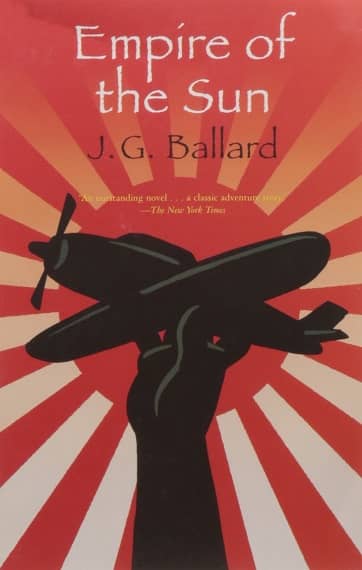 |
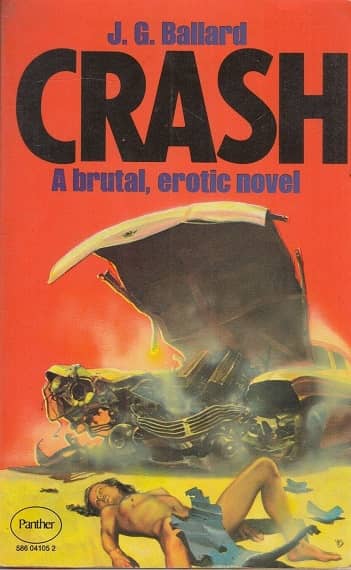 |
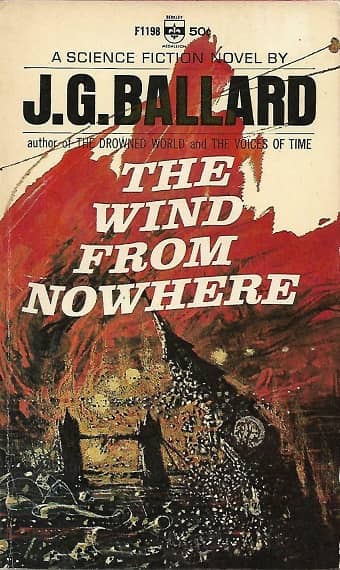 |
For the sake of this article, and not wanting to rely on memory alone, I’ve used a brief synopsis of each novel mentioned here, courtesy of Wikipedia.
If you read Part 1 of this article you’ll know about some of the older novels of dystopian fiction upon which I grew up, novels that surely inspired many other writers… novels I’d hate to see get tossed in a pile or in a corner to collect dust with all the other forgotten novels. Today I’m going to talk about one writer in particular: J. G. Ballard.
Ballard’s memoirs of being a kid during WWII were made into a fairly good film by Steven Spielberg, starring Christian Bale when he was just a kid: Empire of the Sun. Film director David Cronenberg turned Ballard’s strange, erotic and haunting novel Crash into a strange, erotic and haunting film. I’ve read most of Ballard’s short stories, and a number of his other novels, but my personal favorites are his Quartet of Elemental Apocalypse, as one critic dubbed the series. To me, they truly depict dystopian futures. Ballard had a great talent for creating interesting, believable characters, making his stories more character-driven than plot- or action-driven. He excelled at pitting ordinary people against extraordinary odds, and his plots contained many an unexpected twist and turn.
The Wind from Nowhere is Ballard’s debut novel published in 1961; he had previously published only short stories, which I also highly recommend. This is the novel that launched his apocalyptic quartet — his “series” dealing with scenarios of natural disasters. In this novel, civilization is reduced to ruins by prolonged worldwide hurricane force winds. As an added dimension, Ballard explores how disaster and tragedy can bond people together in ways that no normal experiences ever could.
[Click the images for apocalypse-sized versions.]
A wind blows worldwide: it is constantly westward and strongest at the equator. The wind is gradually increasing, and at the beginning of the story, the force of the wind is making air travel impossible. Later, people are living in tunnels and basements, unable to go above ground. Near the end,
The air stream carried with it enormous quantities of water vapor — in some cases the contents of entire seas, such as the Caspian and the Great Lakes, which had been drained dry, their beds plainly visible.
(Since his next novel was The Drowned World, published in 1962, that novel could be considered as a direct sequel to The Wind from Nowhere.)
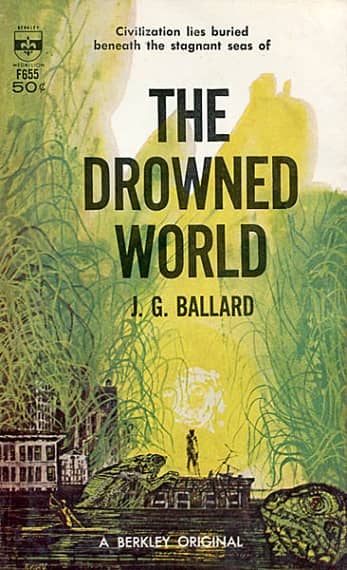 |
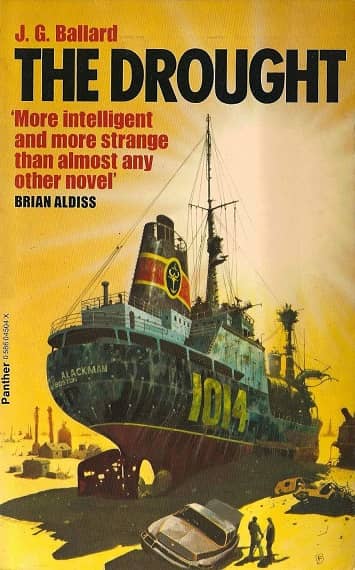 |
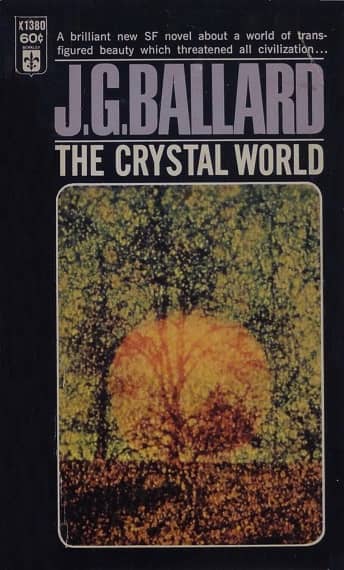 |
The Drowned World was first published in 1962, and the novel features a central character who, rather than being disturbed by the end of the old world, is enraptured by the chaotic reality that has come to replace it. Taking place in the year 2145 in a post-apocalyptic and unrecognizable London, The Drowned World is set in a disrupted environment of tropical temperatures, flooding and accelerated evolution. At the beginning of the novel, the catastrophe responsible for the apocalypse is explained scientifically: solar radiation has caused the polar ice-caps to melt and worldwide temperature to soar, leaving the cities of northern Europe and America submerged in beautiful and haunting tropical lagoons. Ballard uses the post-apocalyptic world of the story to mirror the collective unconscious desires of the main characters. In this novel, Ballard examines how a natural catastrophe causes the central characters to regress mentally. New societies emerge, with strange rites and primitive rituals. Talk about global warming! This is a pretty grim novel, and while there is a spark of hope throughout the story, it is always under the shadow of this “new world order.”
The Drought was published in 1965, and is an expanded version of his 1964 novel The Burning World. In contrast to Ballard’s earlier version, The Drought describes a world in which water is scarce. After an extensive drought, rivers have turned to trickles and the earth to dust, causing the world’s populations to head towards the oceans in search of water. The drought is caused by industrial waste flushed into the ocean, which form an oxygen-permeable barrier of saturated long-chain polymers that prevents evaporation and destroys the precipitation cycle. Ballard likes to put normal people in times of crisis and destruction, so as to explore their limits, their morals, and often their basic humanity — or what’s left of it. Weird and mesmerizingly grotesque, this novel tells a chilling story of the world on the brink of extinction, where violence erupts and insanity reigns as the human race struggles for survival in a worldwide desert of misery. For me, Ballard knows how to paint a picture of total despair, and yet he manages to keep me reading to find that one glimmer of hope.
Finally we have my favorite of Ballard’s “climate novels” — The Crystal World. This 1966 novel tells the story of a physician trying to make his way deep into the jungle to a secluded leprosy treatment facility. While trying to make it to his destination, his chaotic path leads him to try to come to terms with an apocalyptic phenomenon in the jungle that crystallizes everything it touches… plant life, animal life, human life. It’s an unsettling story with a very unique premise, and as in all his short stories and novels, Ballard is more concerned with telling the tale through his characters, how the events shape them, and how they deal with it and with each other. Ballard is more concerned with examining the human condition than he is with telling us how and why this “crystallization” is taking place. This is human drama, and this is what I like about his writing. This is a surreal novel, almost a magical fantasy in its setting. But the dark current of humanity at wits’ end, how characters embrace what’s happening, only succumb to the inevitable, or continue to fight the good fight to persevere and triumph is the heart and soul of this wonderful novel.
These are Ballard’s first four novels, and they are strongly based on elemental themes, showing global destruction by Air, Water, Fire and Earth… and even Man.
As I mentioned when I first started out in Part 1, I haven’t read a dystopian novel in decades, probably not since the early 1980s, at the latest — unless you count Stephen King’s Cell or some zombie apocalypse novels. So I’m really no expert authority or even very knowledgeable about novels published in the last decade of the 20th century, let’s say, and especially those published in the 21st century. Typing “21st century” is still rather strange for me: the future is now, sort of thing, and probably because I spent the first 50 years of my life living in the last 5 decades of the 21st century. I am truly a product of those years, especially of the 1960s.
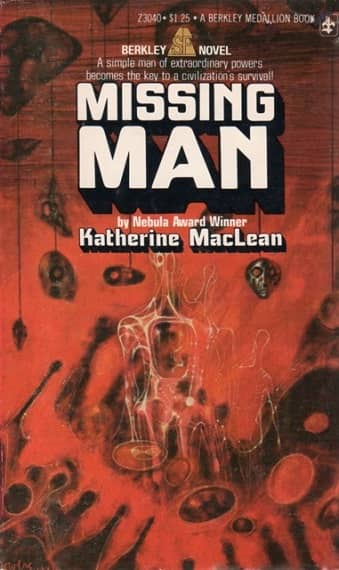 |
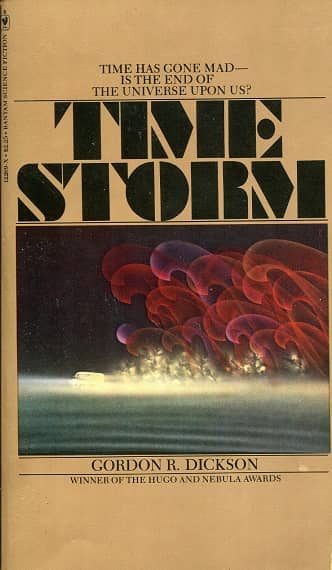 |
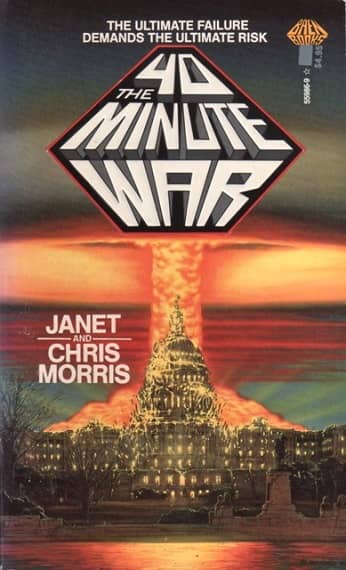 |
Finally, I’m going to list some other books that I’ve read, as well as some that I’ve never read, and also list a number of films I’ve seen. In my experience, dystopian fiction was usually a science fiction novel set in a dark, grim future, and long before the label was attached to these. In these novels the future usually involved totalitarianism in one form or another: fascist, oligarchic, and religious regimes; sometimes alien invasions by some good old extraterrestrial space invaders, or a pandemic of horrific consequences were the catalysts, as depicted in such novels as Footfall, by Jerry Pournelle and Larry Niven, and in I Am Legend, by Richard Matheson. Many other novels had strong science fiction tropes, combined with a dystopian backdrop: Missing Man, by Katherine MacLean; The Demolished Man, by Alfred Bester; After Things Fell Apart, by Ron Goulart, The Lathe of Heaven, by Ursula K. LeGuin; Alternaties, by Michael Kube-MacDowell; Time Storm, by Gordon R. Dickson; Planet of the Apes (a/k/a Monkey Planet), by Pierre Boulé; The Masks of Time, and The Word Inside, by Robert Silverberg; Riders of the Purple Wage, by Philip Jose Farmer (originally published in Dangerous Visions, edited by Harlan Ellison); and almost anything by Philip K. Dick. Janet Morris’ and David Drake’s 1985 novel, Active Measures, which is set in 1999, tells of how the Russians got one of their agents elected president of the United States. In 1984, Janet and Christopher Morris published The 40-Minute War, which deals with a terrorist attack on America much like what happened on 9/11/2001, only the result in their novels is a nuclear exchange between the U.S. and Russia. I can also recommend the first two novels in Walter Rhein’s Slaves of Erador series: The Reader of Acheron and The Literate Thief, set in a future where books are banned, reading is a crime, and education only for the wealthy and the powerful.
There are scores of novels I’ve heard of but have never read: the works of Ayn Rand, for instance, which can be said to be of dystopian futures. And certainly there are scores of titles I never even heard of. It seems to me, however, that the 21st century has brought dystopian fiction to a whole new level of popularity. Why more and more writers are turning out dystopian fiction, and why more and more readers are picking up on them, I can’t really say for certain. Perhaps it’s the political climate in the USA and the surrounding world. Perhaps the genre’s time has come: where once space exploration and rocket ships to other planets were the thing, and time travel a popular trope, the many worlds of Dystopia are now being explored.
And why I can sit and watch a movie about a dystopian future but cannot read any more novels about dystopian futures is a complete mystery to me. Perhaps it’s because a book is totally subjective, and all you have with you when you’re reading are the author’s words and your own imagination. Thus, the novel affects you on a different level, perhaps on several levels. With a film, you get visuals, music, sound FX, special FX, actors playing out their roles . . . and all that puts the story on a different level for me, and at times keeps me distracted from the dark, grim, near hopeless core of the story. I don’t know. I have never written a dystopian novel, although I have written my own “zombie apocalypse” screenplay, back in 1997. But that falls more into the horror genre, anyway. Perhaps fans and authors of dystopian fiction will give me some insight into why they read and write these novels. And who knows? Perhaps if inspiration strikes me with an idea, characters and a plot that intrigue me enough, something I haven’t seen or heard of before, then maybe I’ll write one.
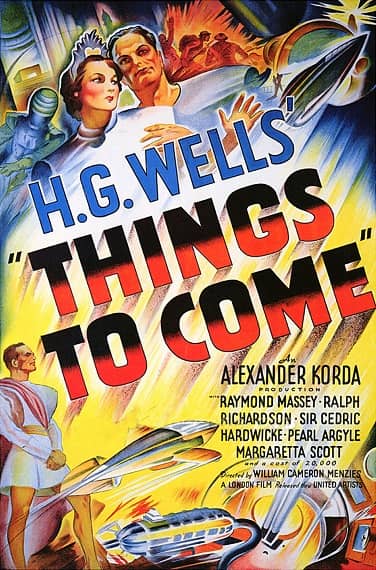 |
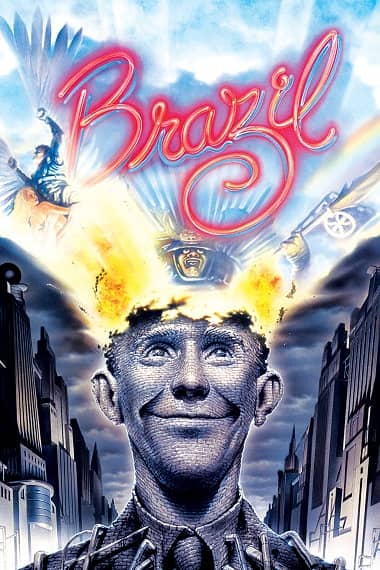 |
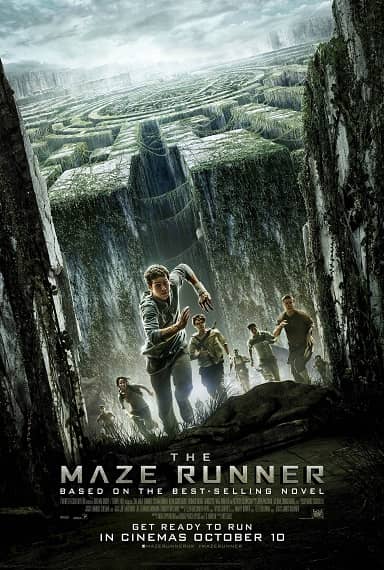 |
Here, in no particular order… is a very incomplete list of all the “old” and more recent dystopian movies I’ve seen.
Metropolis, by Fritz Lang
La Jettee, by Chris Marker
Things To Come, based on The Shape of Things To Come, by H.G. Wells
The Last Man on Earth (based on Richard Matheson’s I Am Legend)
Alphaville, by Jean Luc Goddard
A Boy and His Dog, based on Harlan Ellison’s novella
Strange Days, by James Cameron and Jay Cocks
Blade Runner, by Ridley Scott (Philip K. Dick’s Do Androids Dream of Electric Sheep?)
12 Monkeys, by Terry Gilliam
Brazil, by Terry Gilliam
Minority Report, by Steven Spielberg (based on Philip K. Dick’s story)
Gattaca, by Andrew Niccol
The Matrix, by The Wachowski Brothers
V is for Vendetta, The Wachowski Brothers
THX-1138, by George Lucas
The Hunger Games, by Suzanne Collins
The Maze Runner, by James Dashner
Divergent, by Veronica Roth
The Handmaid’s Tale, by Margaret Atwood
City of Ember, by Jeanne DeFrau
Equilibrium, by Kurt Wimmer
Elysium, by Neil Blomkamp
District 9, by Neil Blomkamp and Terri Tatchel
Children of Men, by Alfonso Cuarron
Snowpiercer, by Bong Joon Ho
Well, there you have my 2-cents worth. There are certainly many other films that can be considered dystopian futures, such as Terminator, Robocop, and A.I. and of course there are far too many more novels to mention. I just hope you’ve enjoyed my articles, learned about some novels and movies you may not have known about, and you’ll stop by again some time.
Once again, thank you. I’ll see you sometime in the future… dystopian or not.
Joe’s last article for Black Gate was A Personal Look at Dystopian Fiction — Part One.
Thank you, John O’Neill for another outstanding presentation of one of my articles. Kudos to all the good folks who help keep Black Gate moving forward and always injecting it with new, fresh blood.
You’re most welcome, Joe. Thanks for reminding me of several books I haven’t thought of in years (like Dickson’s TIME STORM).
You’re welcome, John. I truly appreciate all the opportunities you have afforded me.